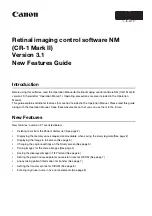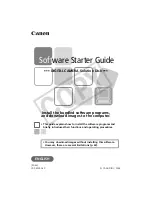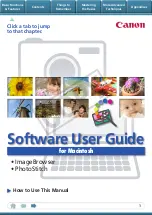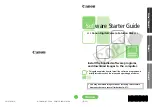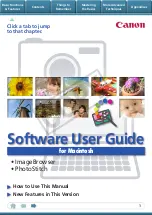
DEC Text Processing Utility Program Development
5.6 Using DECTPU Startup Files
•
Set formats for individual buffers
EVE initialization files contain EVE commands that are executed either when
you invoke the editor or when you issue the EVE @ (at sign) command.
To create an EVE initialization file, put in the file the EVE commands you
want to use to customize the editor. Use one command on each line and one
line for each command. Do not separate the commands with semicolons. If a
command in an EVE initialization file is incomplete, EVE prompts you for more
information, the same as if you were typing the command during an editing
session. Comments in EVE initialization files must be on lines separate from
commands and must begin with an exclamation point (!). You cannot nest EVE
initialization files. Do not use the DO command in an EVE initialization file.
The following sample initialization file sets left and right margins, establishes
overstrike mode, binds the QUIT command to the GOLD/Q key sequence, and
enables an EDT-like keypad:
SET LEFT MARGIN 5
SET RIGHT MARGIN 60
OVERSTRIKE MODE
DEFINE KEY=gold/q QUIT
SET KEYPAD EDT
5.6.7.1 Using an EVE Initialization File at Startup
You can cause an initialization file to be executed in any of the following ways
when you invoke EVE:
•
Name the file EVE$INIT.EVE. This is the default file name for EVE
initialization files.
•
Specify the name of the initialization file as a qualifier to the EDIT/TPU
command.
•
Define a logical name, EVE$INIT, to point to your initialization file.
The first and third methods are appropriate if you intend to use one initialization
file most of the time to customize your editing sessions. If you name the
file EVE$INIT.EVE and do not specify another EVE initialization file on the
command line, EVE automatically executes that file when you invoke DECTPU.
Use the second method to control which initialization file EVE executes to
customize the editing session. For example, if you have an EVE$INIT file
but want to use another initialization file, specify the other file by using the
/INITIALIZATION qualifier to EDIT/TPU. To specify an initialization file called
MY_INIT.EVE, enter the following command string on the command line:
$ EDIT/TPU/INITIALIZATION=MY_INIT.EVE
EVE always executes the initialization file specified on the command line, if such
a file is present. If no file is specified on the command line, EVE searches for
EVE$INIT.EVE first in the current directory and then in your login area. If EVE
finds EVE$INIT.EVE, it executes that file. If the file is not found, the editor
checks whether the logical name EVE$INIT has been defined.
If you plan to create several initialization files and to use them equally, you
may not want to name one of the files EVE$INIT. For example, if you want one
initialization file to set narrow margins and another to set wide margins, create
both files and specify the file you want when you invoke EVE.
5–26 DEC Text Processing Utility Program Development































